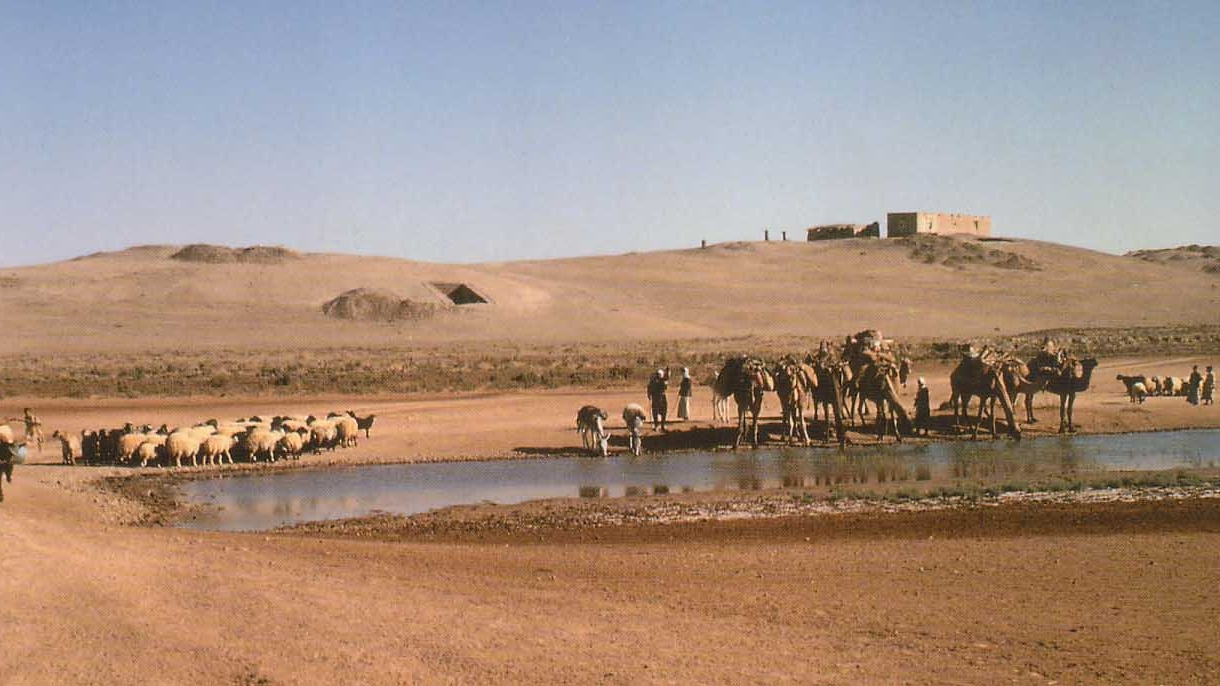A comet explosion may have started agriculture in Syria 12,800 years ago
A fragmented comet that exploded in Earth's atmosphere initiated the first-ever farming village in Syria, according to new research.

A now-extinct village in northern Syria is likely the earliest example of a community of people who were indirectly hit and destroyed by a large comet that struck Earth roughly 12,800 years ago. The comet strike spurred a dramatic shift in lifestyle from hunting to agriculture and even control of wild animals, according to a new analysis of remains excavated from the region back in the '70s.
"Based on current analyses, this would be the earliest example of a human settlement catastrophically affected by a cosmic impact event," researchers write in the new study.
The team's new interpretation of excavated material from the prehistoric village Abu Hureyra, which is now submerged beneath the reservoir Lake Assad in northern Syria also points to a drastic change in local climate around the time Earth collided with shards of the 62-mile-wide (100-kilometer-wide) disintegrating icy body called a Centaur. These objects sport a dual nature in that they look like asteroids but leave a tail of gas and dust in their wake like comets.
Related: Did a comet strike 13,000 years ago change human civilization as we know it?
In what's known as an airburst, one of the comet's pieces packed with immense heat is thought to have exploded high up in the planet's atmosphere and showered intense shockwaves over the village, thus wiping out its settlers. Scientists also suspect the event, called the Younger Dryas Impact Hypothesis, blanketed the region with dust, blocking out sunlight and triggering a chilly winter.
Before the comet strike, the record shows the settlers dominantly consumed wild fruits, berries and legumes while post-event remains show their diet had shifted to grains and lentils, a result of early experimentation in cultivation.
The region also saw a spike in drought-resistant crops, reflecting a change from cool climate to a much drier one, according to the new study. "The villagers started to cultivate barley, wheat and legumes," James Kennett, a professor emeritus at University of California Santa Barbara and a co-author of the new study, said in a statement. "This is what the evidence clearly shows."
Get the Space.com Newsletter
Breaking space news, the latest updates on rocket launches, skywatching events and more!
These findings are consistent with the 2007 hypothesis that our planet witnessed several such comet airbursts across continents. Parts of the giant comet that burst over the Syrian village also showered upon over 50 known locations across at least five continents, researchers say.
Because the comet's "impact" was indirect and really an explosion in the air, there are no craters in the ground, researchers say. "But a crater is not required," Kennett said in the same statement.
"Many accepted impacts have no visible crater."
This research is described in a paper published Sept. 28 in the journal Airbursts and Cratering Impacts.
Join our Space Forums to keep talking space on the latest missions, night sky and more! And if you have a news tip, correction or comment, let us know at: community@space.com.

Sharmila Kuthunur is a Seattle-based science journalist focusing on astronomy and space exploration. Her work has also appeared in Scientific American, Astronomy and Live Science, among other publications. She has earned a master's degree in journalism from Northeastern University in Boston. Follow her on BlueSky @skuthunur.bsky.social
